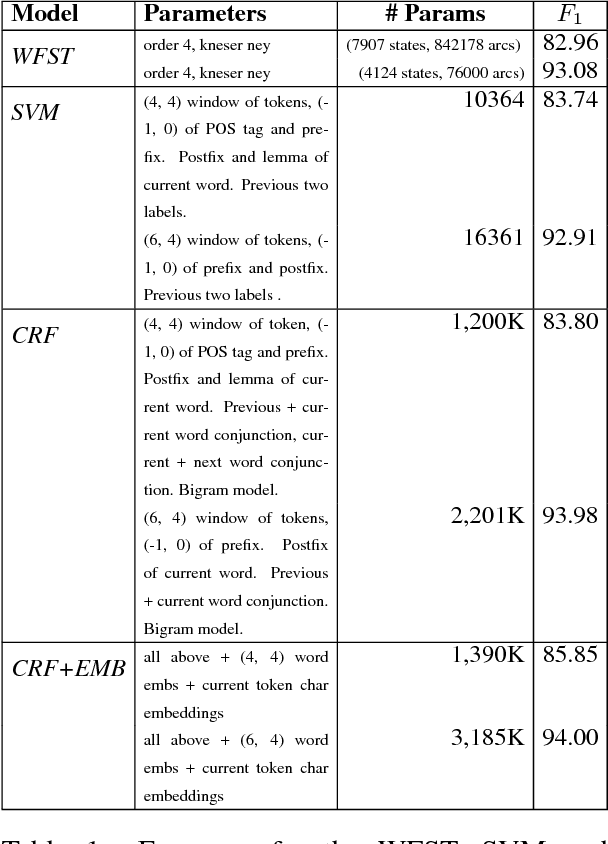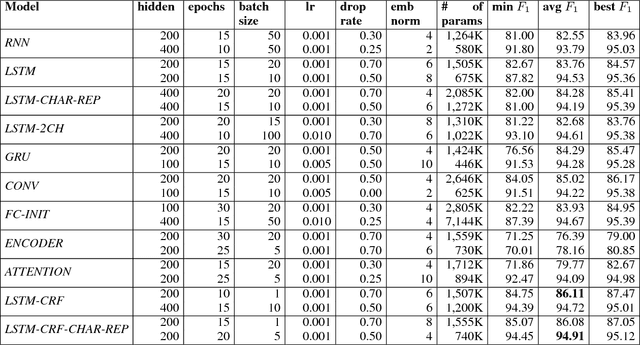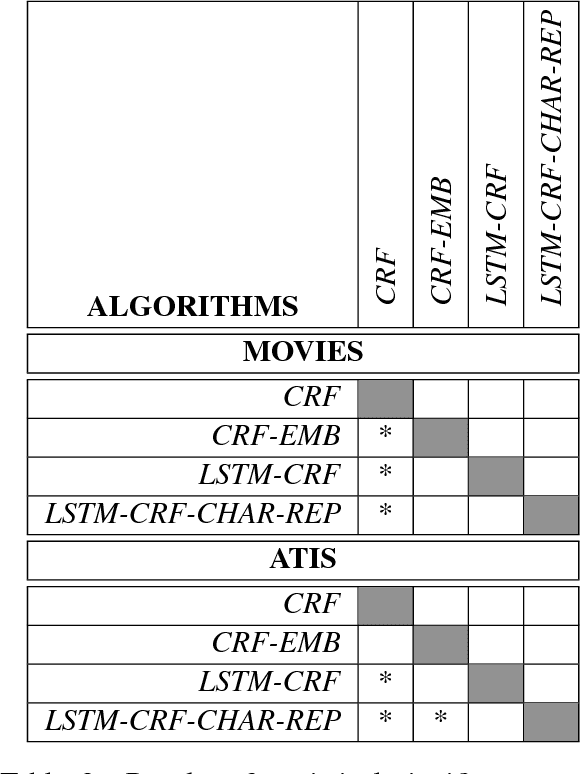Evgeny Stepanov
Concept Tagging for Natural Language Understanding: Two Decadelong Algorithm Development
Jul 27, 2018


Abstract:Concept tagging is a type of structured learning needed for natural language understanding (NLU) systems. In this task, meaning labels from a domain ontology are assigned to word sequences. In this paper, we review the algorithms developed over the last twenty five years. We perform a comparative evaluation of generative, discriminative and deep learning methods on two public datasets. We report on the statistical variability performance measurements. The third contribution is the release of a repository of the algorithms, datasets and recipes for NLU evaluation.
Coherence Models for Dialogue
Jun 21, 2018


Abstract:Coherence across multiple turns is a major challenge for state-of-the-art dialogue models. Arguably the most successful approach to automatically learning text coherence is the entity grid, which relies on modelling patterns of distribution of entities across multiple sentences of a text. Originally applied to the evaluation of automatic summaries and the news genre, among its many extensions, this model has also been successfully used to assess dialogue coherence. Nevertheless, both the original grid and its extensions do not model intents, a crucial aspect that has been studied widely in the literature in connection to dialogue structure. We propose to augment the original grid document representation for dialogue with the intentional structure of the conversation. Our models outperform the original grid representation on both text discrimination and insertion, the two main standard tasks for coherence assessment across three different dialogue datasets, confirming that intents play a key role in modelling dialogue coherence.
Depression Severity Estimation from Multiple Modalities
Nov 10, 2017



Abstract:Depression is a major debilitating disorder which can affect people from all ages. With a continuous increase in the number of annual cases of depression, there is a need to develop automatic techniques for the detection of the presence and extent of depression. In this AVEC challenge we explore different modalities (speech, language and visual features extracted from face) to design and develop automatic methods for the detection of depression. In psychology literature, the PHQ-8 questionnaire is well established as a tool for measuring the severity of depression. In this paper we aim to automatically predict the PHQ-8 scores from features extracted from the different modalities. We show that visual features extracted from facial landmarks obtain the best performance in terms of estimating the PHQ-8 results with a mean absolute error (MAE) of 4.66 on the development set. Behavioral characteristics from speech provide an MAE of 4.73. Language features yield a slightly higher MAE of 5.17. When switching to the test set, our Turn Features derived from audio transcriptions achieve the best performance, scoring an MAE of 4.11 (corresponding to an RMSE of 4.94), which makes our system the winner of the AVEC 2017 depression sub-challenge.
 Add to Chrome
Add to Chrome Add to Firefox
Add to Firefox Add to Edge
Add to Edge